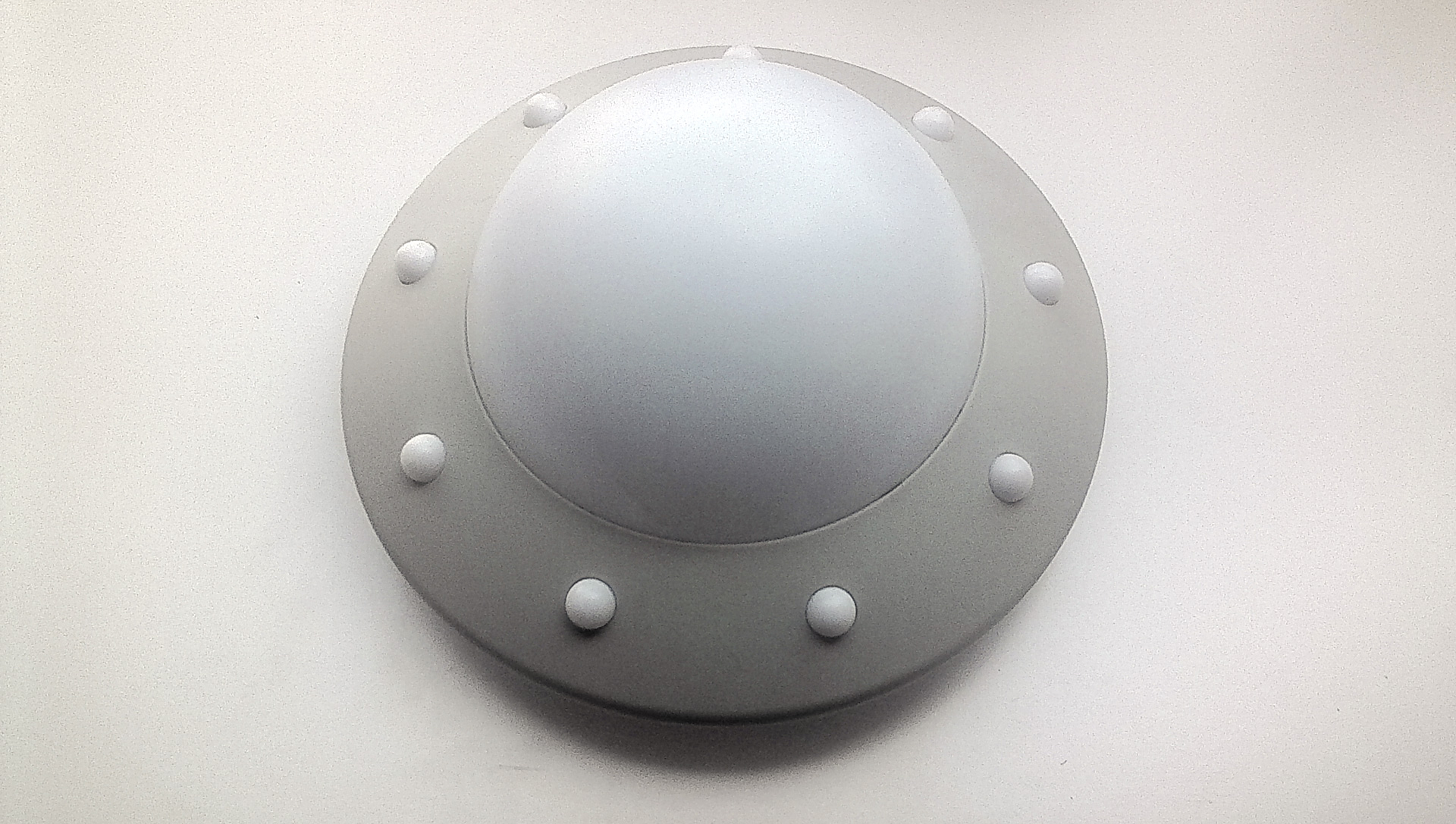

Unidentified flying object (UFO) is the popular term for any aerial phenomenon that cannot immediately be identified. Most UFOs are identified on investigation as conventional objects or phenomena. The term is widely used for claimed observations of extraterrestrial spacecraft.
The term "UFO" (or "UFOB") was coined in 1953 by the United States Air Force (USAF) to serve as a catch-all for all such reports. In its initial definition, the USAF stated that a "UFOB" was "any airborne object which by performance, aerodynamic characteristics, or unusual features, does not conform to any presently known aircraft or missile type, or which cannot be positively identified as a familiar object." Accordingly, the term was initially restricted to that fraction of cases which remained unidentified after investigation, as the USAF was interested in potential national security reasons and "technical aspects" (see Air Force Regulation 200-2).
During the late 1940s and through the 1950s, UFOs were often referred to popularly as "flying saucers" or "flying discs". The term UFO became more widespread during the 1950s, at first in technical literature, but later in popular use. UFOs garnered considerable interest during the Cold War, an era associated with a heightened concern for national security, and, more recently, in the 2010s, for unexplained reasons. Nevertheless, various studies have concluded that the phenomenon does not represent a threat to national security, nor does it contain anything worthy of scientific pursuit (e.g., 1951 Flying Saucer Working Party, 1953 CIA Robertson Panel, USAF Project Blue Book, Condon Committee).
The Oxford English Dictionary defines a UFO as "An unidentified flying object; a 'flying saucer'." The first published book to use the word was authored by Donald E. Keyhoe.
As an acronym, "UFO" was coined by Captain Edward J. Ruppelt, who headed Project Blue Book, then the USAF's official investigation of UFOs. He wrote, "Obviously the term 'flying saucer' is misleading when applied to objects of every conceivable shape and performance. For this reason the military prefers the more general, if less colorful, name: unidentified flying objects. UFO (pronounced Yoo-foe) for short." Other phrases that were used officially and that predate the UFO acronym include "flying flapjack", "flying disc", "unexplained flying discs", and "unidentifiable object".
The phrase "flying saucer" had gained widespread attention after the summer of 1947. On June 24, a civilian pilot named Kenneth Arnold reported seeing nine objects flying in formation near Mount Rainier. Arnold timed the sighting and estimated the speed of discs to be over 1,200 mph (1,931 km/h). At the time, he claimed he described the objects flying in a saucer-like fashion, leading to newspaper accounts of "flying saucers" and "flying discs". UFOs were commonly referred to colloquially, as a "Bogey" by military personal and pilots during the cold war. The term "bogey" was originally used to report anomalies in radar blips, to indicate possible hostile forces that might be roaming in the area.
In popular usage, the term UFO came to be used to refer to claims of alien spacecraft, and because of the public and media ridicule associated with the topic, some ufologists and investigators prefer to use terms such as "unidentified aerial phenomenon" (UAP) or "anomalous phenomena", as in the title of the National Aviation Reporting Center on Anomalous Phenomena (NARCAP). "Anomalous aerial vehicle" (AAV) or "unidentified aerial system" (UAS) are also sometimes used in a military aviation context to describe unidentified targets.
A light-emitting diode (LED) is a semiconductor light source that emits light when current flows through it. Electrons in the semiconductor recombine with electron holes, releasing energy in the form of photons. This effect is called electroluminescence. The color of the light (corresponding to the energy of the photons) is determined by the energy required for electrons to cross the band gap of the semiconductor.[6] White light is obtained by using multiple semiconductors or a layer of light-emitting phosphor on the semiconductor device.
Appearing as practical electronic components in 1962, the earliest LEDs emitted low-intensity infrared light. Infrared LEDs are used in remote-control circuits, such as those used with a wide variety of consumer electronics. The first visible-light LEDs were of low intensity and limited to red. Modern LEDs are available across the visible, ultraviolet, and infrared wavelengths, with high light output.
Early LEDs were often used as indicator lamps, replacing small incandescent bulbs, and in seven-segment displays. Recent developments have produced high-output white light LEDs suitable for room and outdoor area lighting. LEDs have led to new displays and sensors, while their high switching rates are useful in advanced communications technology.
LEDs have many advantages over incandescent light sources, including lower energy consumption, longer lifetime, improved physical robustness, smaller size, and faster switching. Light-emitting diodes are used in applications as diverse as aviation lighting, automotive headlamps, advertising, general lighting, traffic signals, camera flashes, lighted wallpaper and medical devices.
Unlike a laser, the color of light emitted from an LED is neither coherent nor monochromatic, but the spectrum is narrow with respect to human vision, and functionally monochromatic.